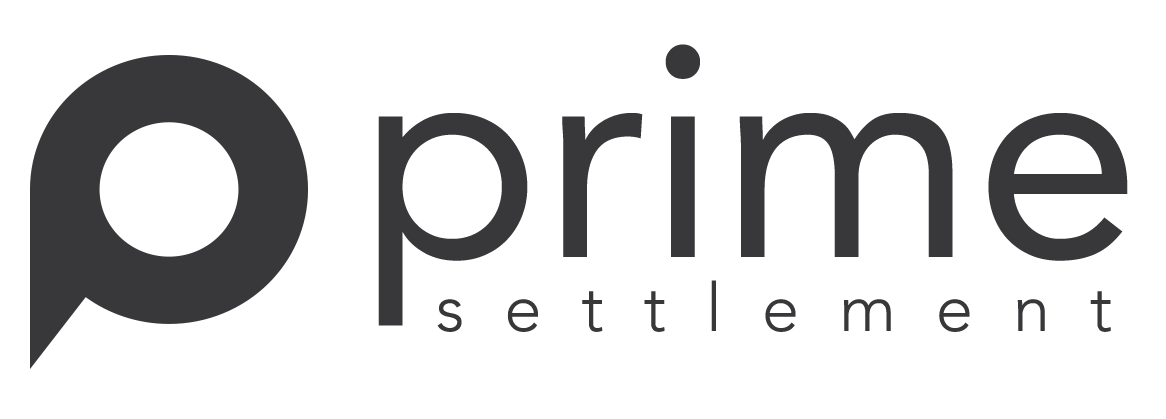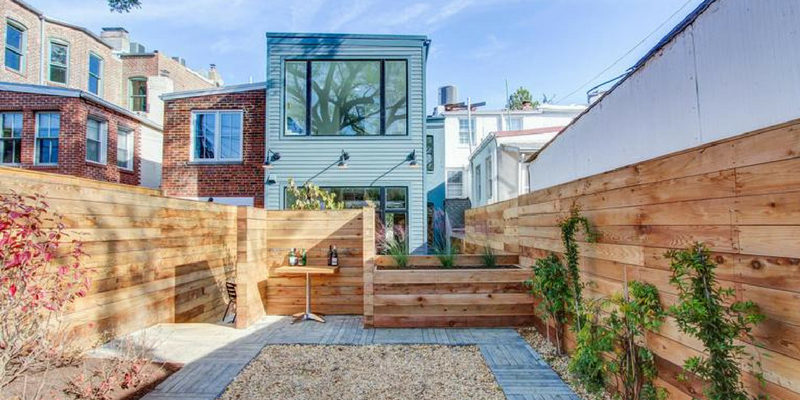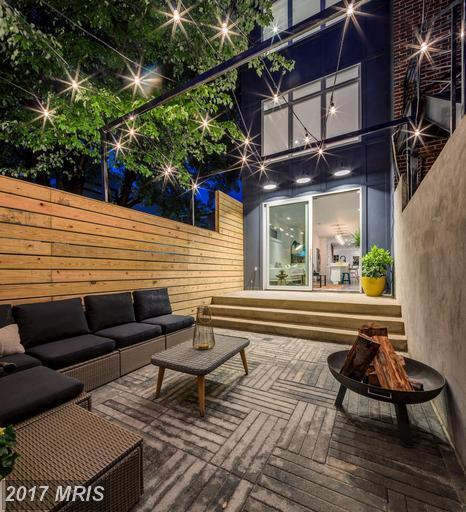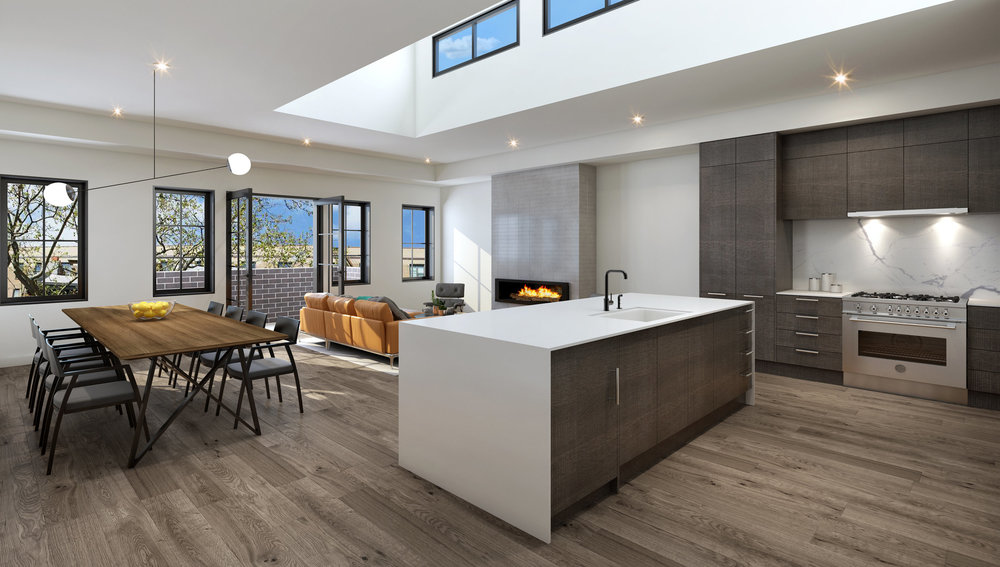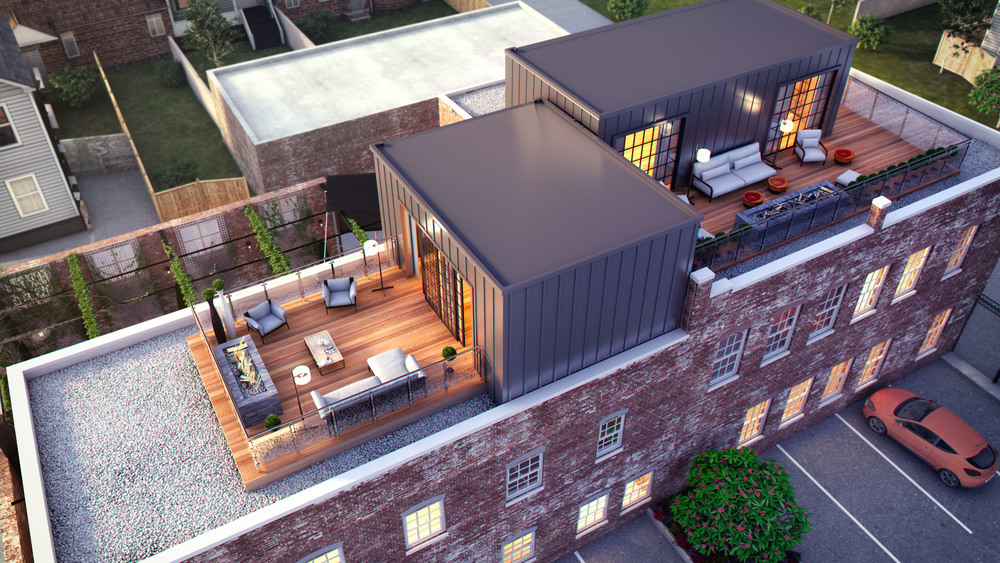The economy, environment and demographics always play a role in emerging trends, but there are other factors these days such as the boon of technology and the desire to live a healthier lifestyle that impact the details of home design. We’re not just talking the mid-century modern decor craze, wallpaper fads, or DIY vanity trends. While many buyers and investors still pay close attention to details such as counter tops, fixtures, and flooring, many more are looking at the flow of the space as a whole, the eco-friendliness of the systems and materials, and the accessibility and usefulness of outdoor space.
Here are some of the latest themes in residential styling that we’re seeing that are not only innovative, but also increase value while allowing owners to personalize their spaces.
LIFE IS OUTSIDE
What’s happening: Perhaps it’s because living spaces in the city are often small, or maybe it’s the hours spent at the office, but more and more people want to stay outdoors longer and they’re looking to their homes to help achieve that. According to Brett Warmington of Warmington Oppenheim Development (WOD), a boutique DC-based urban infill developer, indoor/outdoor spaces are a big trend, especially in cities.
Things to look for: Outdoor leisure space is a valuable commodity. Features like outdoor living areas with fire pits or outdoor fireplaces allow outdoor activity even in colder months. When total outdoor living isn’t possible, screened porches that double as a sun room in the winter months are a big draw. And newer fade- and weather-resistant acrylic fibers make it easy for homeowners to decorate their outdoor spaces in whatever colors and styles they prefer.
“People want to feel as if they are living in a kind of ‘urban oasis’”, says Mr. Warmington, “so we spend a considerable amount of thought, time, energy and money on things like bringing in landscape engineers and architects to design the outdoor areas, choose the plants, and select other amenities that work specifically in that space, no matter how small.”
OPEN UP AND LET THE LIGHT SHINE IN
What’s happening: The combination of more time spent on social media and the fact that fewer people live near their family members can cause a sense of isolation and a craving for more light, air, and open spaces for face-to-face interactions. Homes have traditionally been divided into segregated rooms separated by walls, but these days, more and more walls are coming down as people now want lighter, more open spaces. They also want spaces to serve multiple purposes, and with this desire comes a different kind of living, making open floor plans increasingly popular.
Things to look for: “Everything structural is opening up while furnishings and details are edited down,” says Brook Rose another boutique developer in DC. “We’re seeing a big demand for more floor to ceiling windows, a desire for higher ceilings, open staircases, and stark white walls.”
While walls are coming down and rooms are expanded into flowing living space, there is also an increased importance of lights and lighting. This means installation of more and larger windows and light fixtures, as well as the addition of light wall colors to imbue as much light and airiness as possible into a space. One thing that WOD does in the spaces they design is put in skylights wherever we possible. “Many spaces can’t accommodate windows so we add skylights because lighting changes a space and no matter how advanced bulb manufacturers become, nothing can ever replace the natural light of the sun.”
NOT ONE-SIZE FITS ALL
What’s happening: As home prices continue to rise and baby boomers downsize to retire or cut costs, every inch of available space counts more than ever. To make the best use of space for each resident, design professionals are zeroing in on how clients want to live rather than thinking about how people use space generically, and for this, one size certainly doesn’t fit all.
Things to look for: You and your clients are likely to see a greater variety in terms of layouts, building materials, home systems, color palettes, and furnishing choices, both in model homes and in houses staged for sale. Listing agents can take the cue from this trend by helping sellers highlight the flexibility of their spaces when putting a home on the market. Buyers’ reps should similarly showcase a range of living options in each home-shopping session.
For example, when individual homes or units can’t offer the open space, airy feel and outdoor living areas that homeowners desire, many multi-unit buildings and even single-family residential neighborhoods are now beginning to offer an array of amenity spaces to meet these needs. Residents get access to open, multi-use spaces like clubhouses with fancy kitchens, outdoor areas with pools and movie screens, fitness centers with group classes, and drive-up areas for food-truck socials. As a real estate professional, it’s advantageous to know which buildings, communities, and neighborhoods offer these sought-after social events and gathering spaces so you can point these out to your clients and open their minds to new options.
LIVING IN A MATERIAL WORLD
What’s happening: With an increased emphasis on healthier and more environmentally-friendly living, homeowners are actively seeking out ways to improve the health and sustainability of their homes. To do this, they’re looking to everything from water purifiers and eco-friendly HVAC systems, to non toxic paints and adhesives. A newer element to this trend will include enhanced environmental testing.

Things to look for: A growing number of builders, remodelers, architects, and interior designers expect health to influence their business decisions due to consumer demand, according to studies from both the Urban Land Institute and Dodge Data & Analytics (formerly McGraw-Hill Construction). You should expect to see more buyers hiring health experts to examine listings and requiring in-home contaminant removal prior to a sale.
Your clients will also have greater access to additional home products that promote a healthy and sustainable home, such as UV and LED circadian lighting that promotes healthier sleep patterns; environmentally conscious building materials; and more efficient appliances and home systems. In addition, use of eco-conscious materials like bamboo, cork and hardwood flooring, low- or no-VOC paints, and a variety of reclaimed or “upcycled” materials in design decisions are more popular as homeowners aim for unique but “conscious” home design.
HOMES ARE GETTING SMARTER
What’s happening: With the rise of technology and “smart” devices, there’s a big trend toward “smart” homes. Everything from appliances to alarm systems are becoming wireless and internet-connected. WOD now installs Nest “smart” thermostats, as well as camera doorbells and electronic locks (no key loss!) in many of its developments, increasing connectivity and security. In addition, smart homes mean better efficiency overall, and homeowners who are able to control everything from the thermostat to the oven, and the dishwasher to the washing machine, with just a touch on a phone app or the sound of their voice.
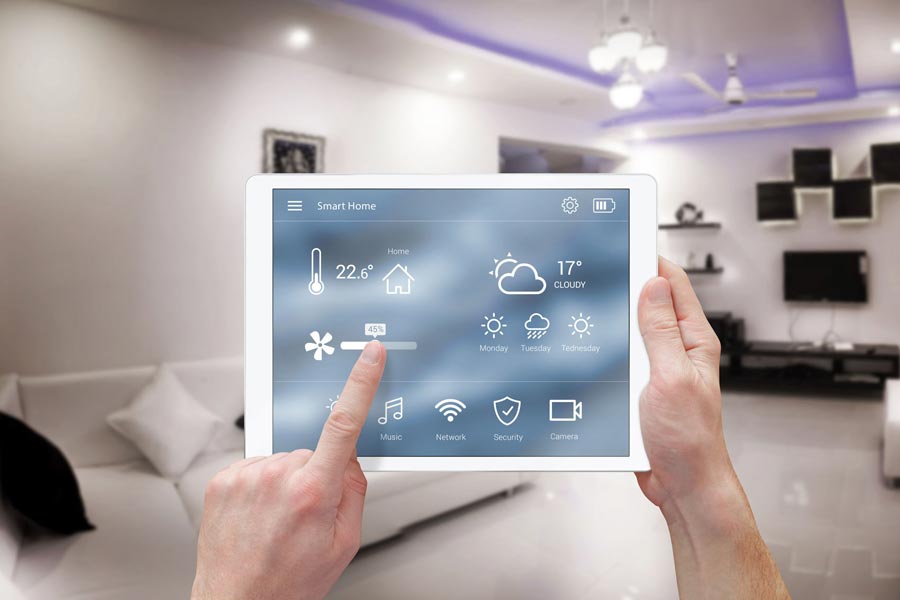
The future is smart home automation
Things to look for: As tech-loving millennials get used to the idea of smart homes – and smart appliances and voice-controlled interfaces like Amazon’s Alexa and Google Home become more commonplace – expect an increase in the number of buyers seeking out homes that are wi-fi connected from top to bottom. Anything that makes life more convenient and allows remote control of home systems will be high on the priority list for many new home buyers.
This is by no means an exhaustive list of the design trends that are seen in the current market, especially because design preferences are always shifting and changing. Still, with constant technological advances, environmental concerns that aren’t going anywhere, and a continued desire for connectedness in our ever changing world, these trends seem likely to stick around for awhile.
